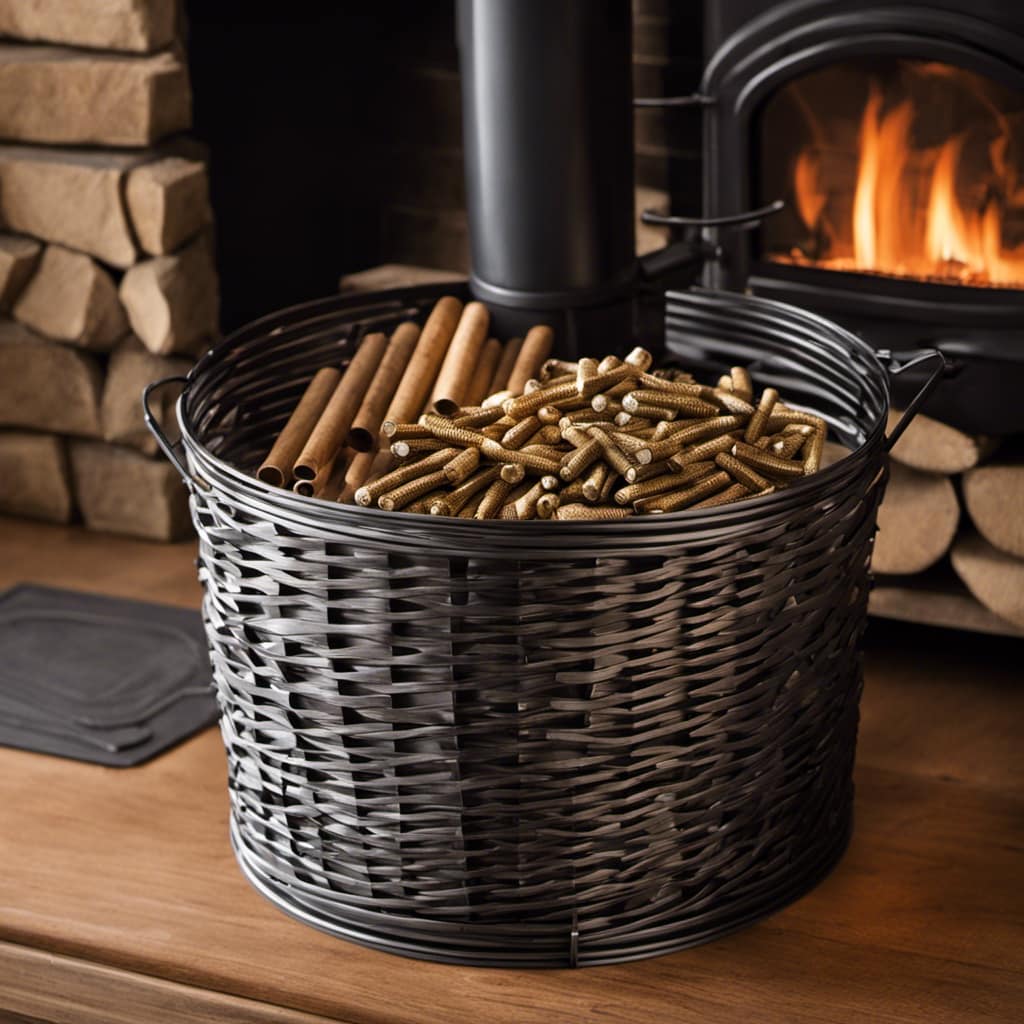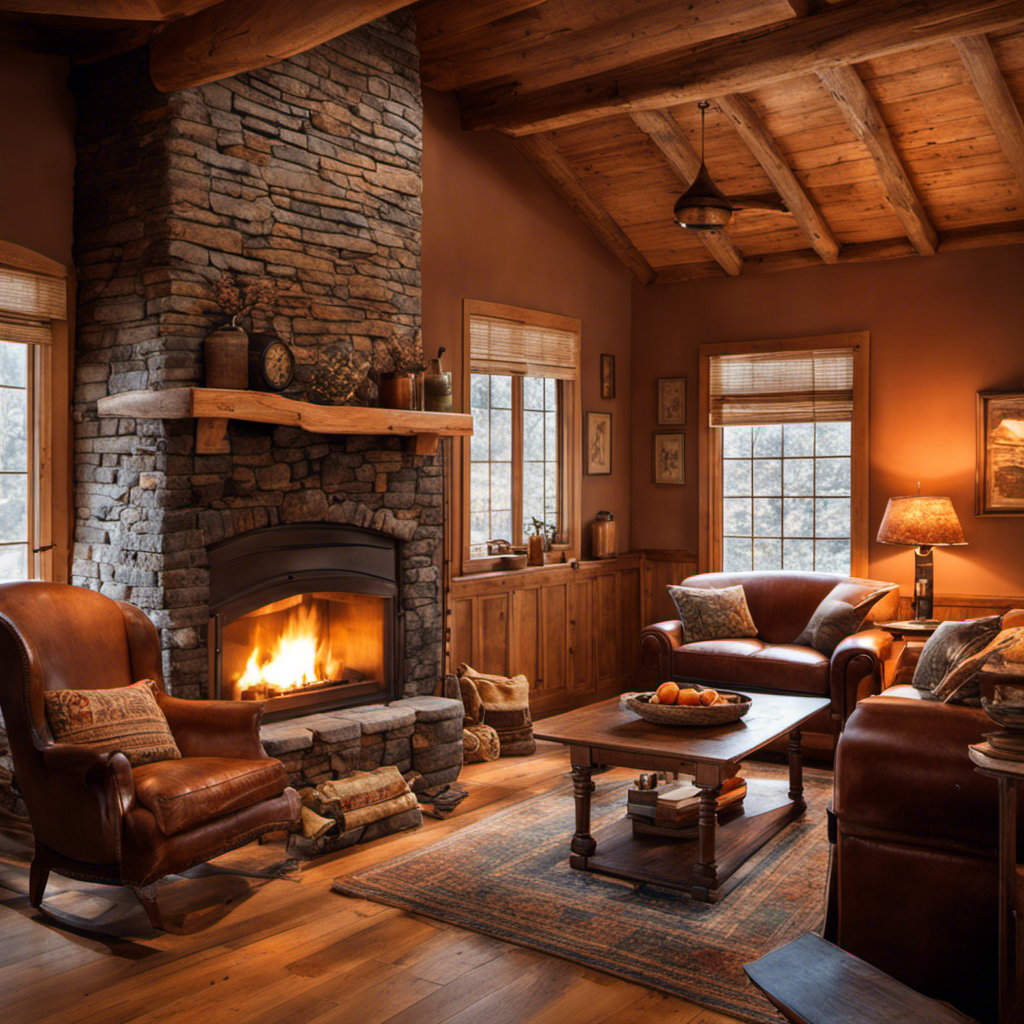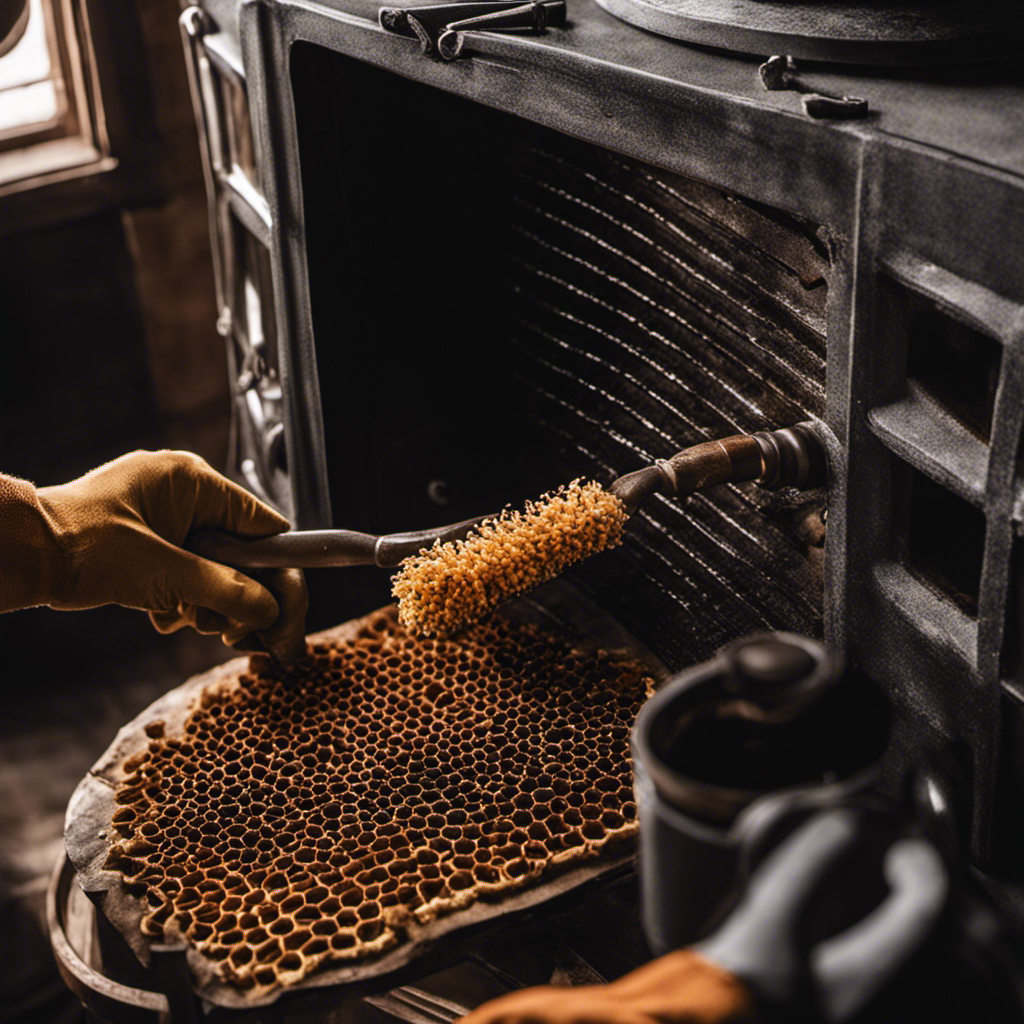
I have always found the cozy crackling and warm ambiance of a wood stove on a cold evening to be inviting. However, learning how to burn wood efficiently took some trial and error. Fortunately, I learned that the key to maintaining a lively fire is skillfully adjusting the damper and controlling the airflow.
In this article, I’ll guide you through the process of using these two components to achieve optimal airflow and efficient burning. Get ready to enjoy a toasty fire that warms both your body and soul.
Key Takeaways
- The damper controls the airflow in a wood stove and plays a crucial role in maintaining combustion and maximizing efficiency.
- Adjusting the damper regulates the amount of oxygen entering the firebox, opening it fully allows more air in resulting in a hotter fire, while closing it restricts airflow leading to a slower burn and reduced heat output.
- Proper airflow is crucial for a clean and effective burn, and adjusting the damper allows control over the amount of air entering the stove.
- Other factors that affect air intake efficiency include air vents, draft control, and combustion air supply.
Understanding the Function of the Damper
I always rely on the damper to control the airflow in my wood stove. The damper plays a crucial role in maintaining the combustion process and maximizing the efficiency of the stove.
By adjusting the damper position, I can regulate the amount of oxygen that enters the firebox, thus controlling the intensity of the fire. When the damper is fully open, more air is allowed in, resulting in a hotter and more vigorous fire. Conversely, closing the damper restricts the airflow, leading to a slower burn and reduced heat output.
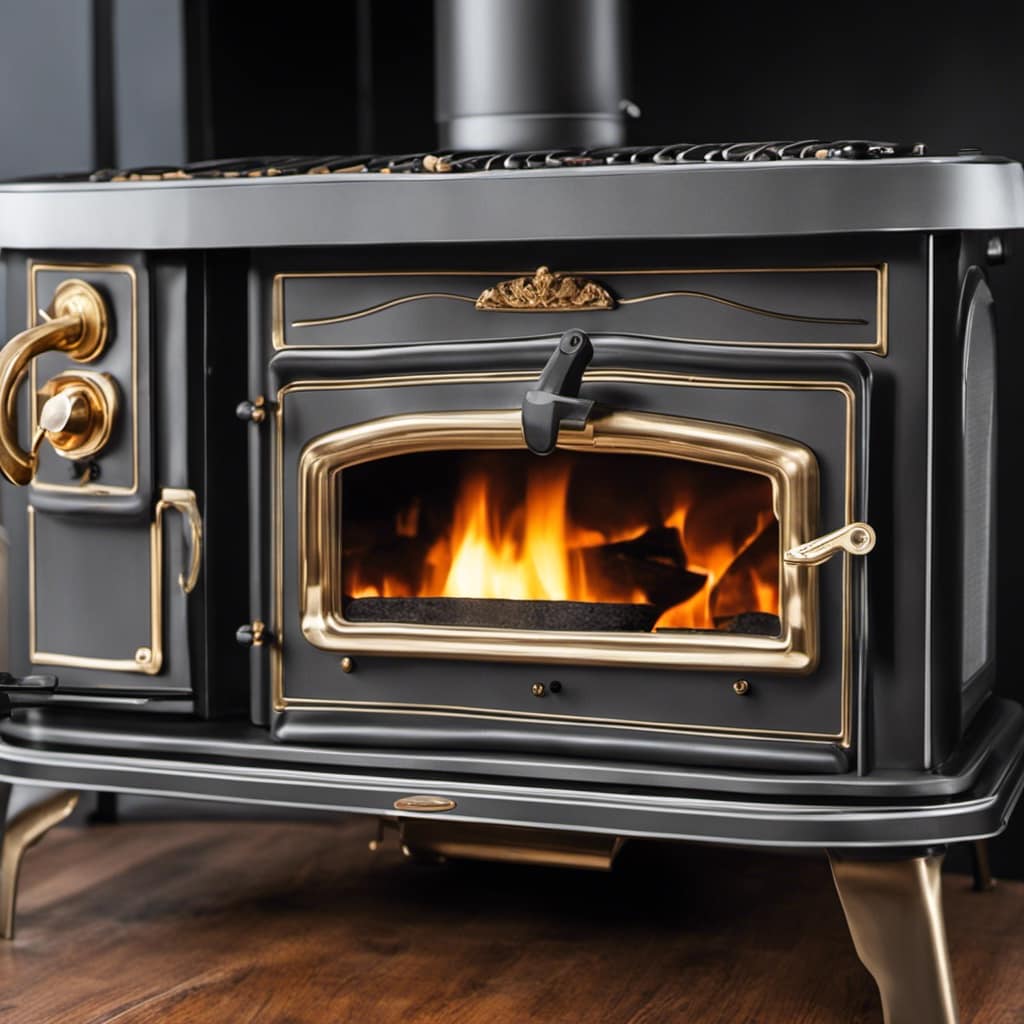
It’s important to find the right balance when using the damper control, as too much air can cause excessive heat loss and wasted fuel, while too little air can lead to incomplete combustion and the production of harmful gases.
Adjusting the Damper for Optimal Airflow
The position of the damper should be adjusted for optimal airflow in order to achieve the most efficient burn. When it comes to burning wood in a stove, proper airflow is crucial for a clean and effective burn. Adjusting the damper allows you to control the amount of air entering the stove, which directly affects the combustion process. To help you understand the importance of this adjustment, I have compiled a table outlining common damper problems and troubleshooting techniques:
| Common Damper Problems | Troubleshooting Techniques |
|---|---|
| Damper stuck in closed position | Lubricate the damper mechanism and check for any obstructions |
| Excessive smoke in the room | Open the damper to allow more air circulation |
| Insufficient heat output | Close the damper slightly to retain more heat |
Controlling the Air Intake for Efficient Burning
To achieve efficient burning, it’s important to control both the amount of air intake and the quality of airflow. Proper ventilation is crucial for a wood stove to function optimally. Here are four factors that can affect air intake efficiency:
-
Damper position: Adjusting the damper controls the amount of air entering the stove. Opening it fully allows more oxygen to fuel the fire, while closing it partially reduces air intake, limiting the fire’s intensity.
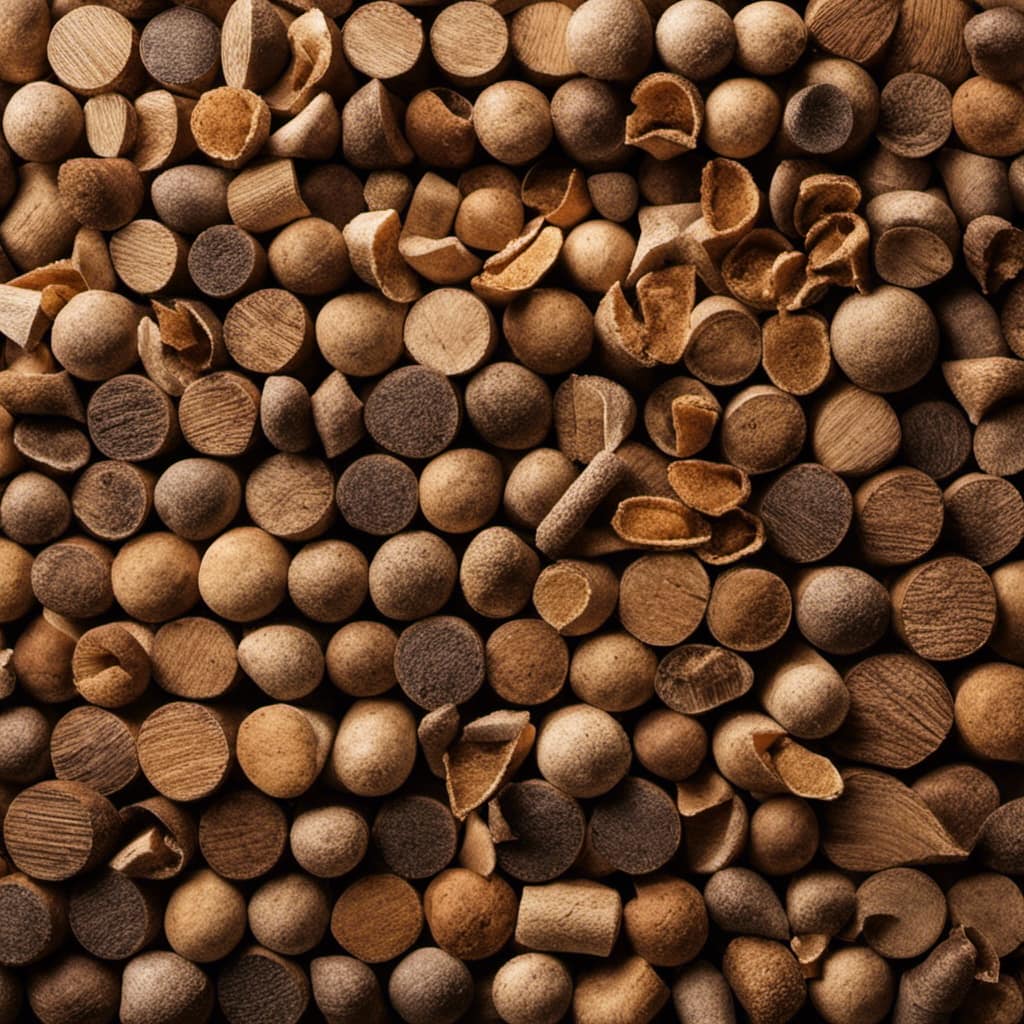
-
Air vents: Wood stoves often have adjustable air vents. By regulating these vents, you can control the flow of air into the stove, ensuring a balanced combustion process.
-
Draft control: A draft control mechanism allows you to regulate the airflow by adjusting the chimney damper. This control helps maintain a constant, efficient burn, preventing excessive heat loss.
-
Combustion air supply: Some wood stoves have a secondary air supply that introduces additional oxygen into the firebox. This feature enhances combustion and improves the stove’s overall efficiency.
Tips for Properly Stoking the Fire in Your Wood Stove
To maintain a steady and robust fire in your wood stove, keep adding small amounts of dry kindling and logs while using a poker to stir the embers and distribute the heat evenly. Proper stoking techniques are essential for efficient and effective wood stove operation.
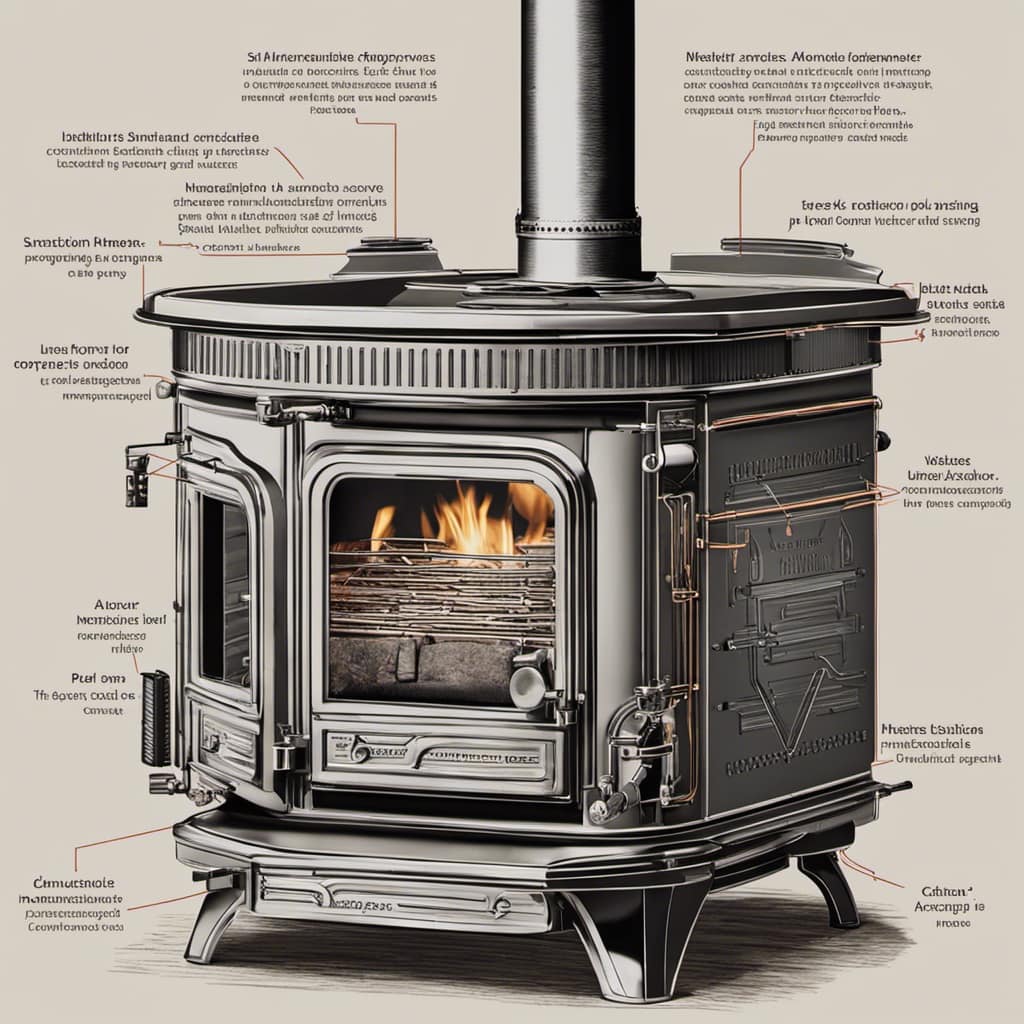
When adding kindling and logs, make sure they’re dry to prevent excessive smoke and creosote buildup. It’s important to avoid overloading the stove with too much wood, as this can lead to poor airflow and incomplete combustion. If you notice a lack of heat or excessive smoke, check that the air intake and damper are fully open. Troubleshooting common wood stove issues can help ensure optimal performance and safety.
Now, let’s explore how to maintain and clean your wood stove for longevity.
Maintaining and Cleaning Your Wood Stove for Longevity
I regularly clean and maintain my wood stove to ensure its longevity and efficient operation. Proper maintenance is crucial for the safe and effective use of a wood stove. Here are some important steps I follow to keep my wood stove in excellent condition:
-
Regular Cleaning: I clean my wood stove regularly to remove any ash, soot, or debris that may accumulate. This helps maintain optimal airflow and prevents the buildup of creosote, which can be a fire hazard.

-
Inspecting and Replacing Gaskets: I inspect the gaskets around the door and glass regularly. If they’re worn or damaged, I replace them to ensure a tight seal, preventing any air leaks.
-
Cleaning the Chimney: I hire a professional chimney sweep annually to clean and inspect the chimney. This helps remove any creosote buildup and ensures proper ventilation.
-
Checking and Cleaning the Flue: I check the flue for any obstructions and clean it if necessary. A clear flue allows for efficient airflow and helps prevent smoke from entering the room.
Frequently Asked Questions
How Do I Know if My Wood Stove Damper Is Working Properly?
To determine if your wood stove damper is working properly, start by inspecting it for any visible damage or blockages. Then, test the damper’s functionality by adjusting it and observing if it effectively controls the airflow.
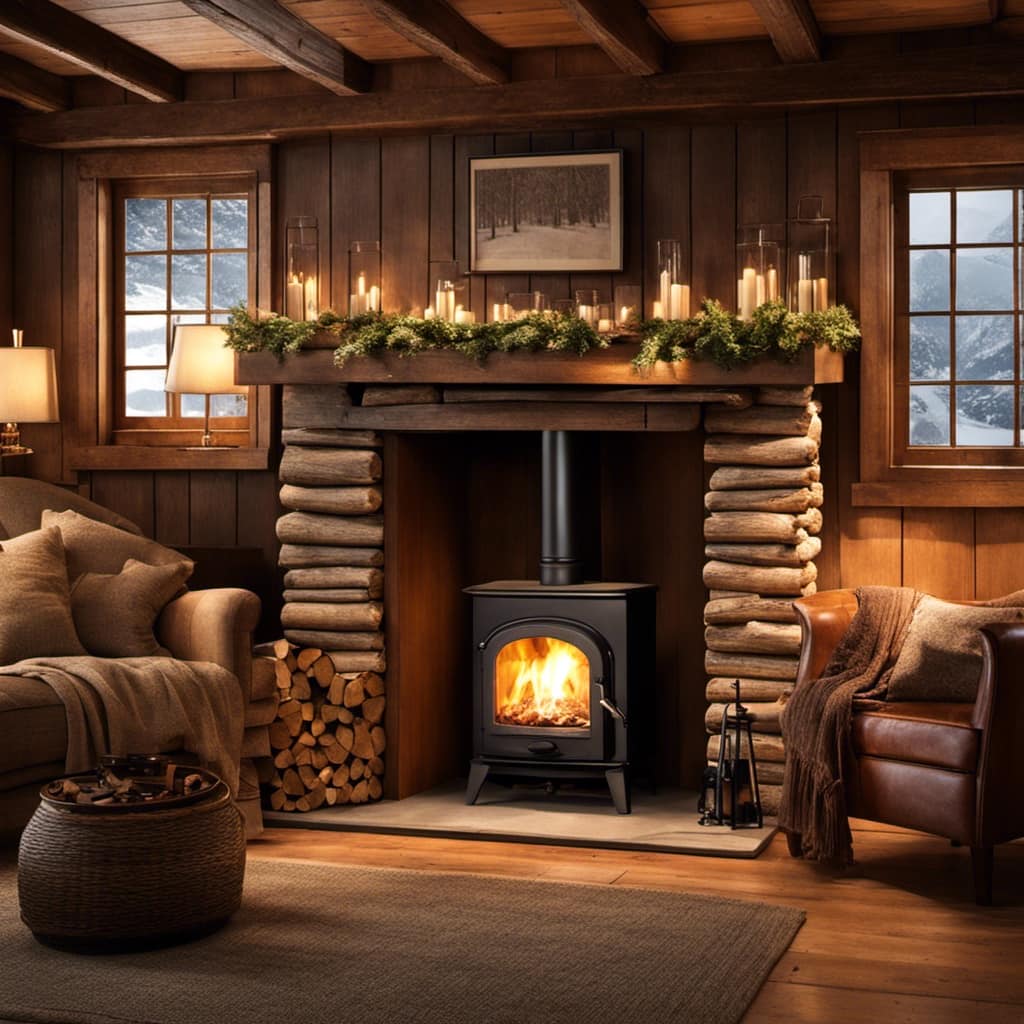
Can I Adjust the Damper While the Fire Is Burning?
Yes, you can adjust the damper while the fire is burning, but it’s important to take safety precautions. By slowly opening or closing the damper, you can control the airflow and regulate the burn rate of the fire.
What Are Some Signs That the Air Intake on My Wood Stove Needs to Be Adjusted?
Some signs of improper air intake adjustment on a wood stove include poor combustion, excessive smoke, and difficulty in maintaining a consistent fire. To adjust the air intake correctly, consult the stove’s manual for specific instructions.
Is It Necessary to Use Specific Types of Wood for Efficient Burning in a Wood Stove?
Different types of wood can affect the efficiency of burning in a wood stove. It is important to use dry, seasoned wood with a low moisture content for optimal results.
How Often Should I Clean My Wood Stove to Ensure Optimal Performance?
I clean my wood stove regularly to ensure optimal performance. It’s important to know how to clean a wood stove and the importance of regular maintenance for efficient burning and safety.
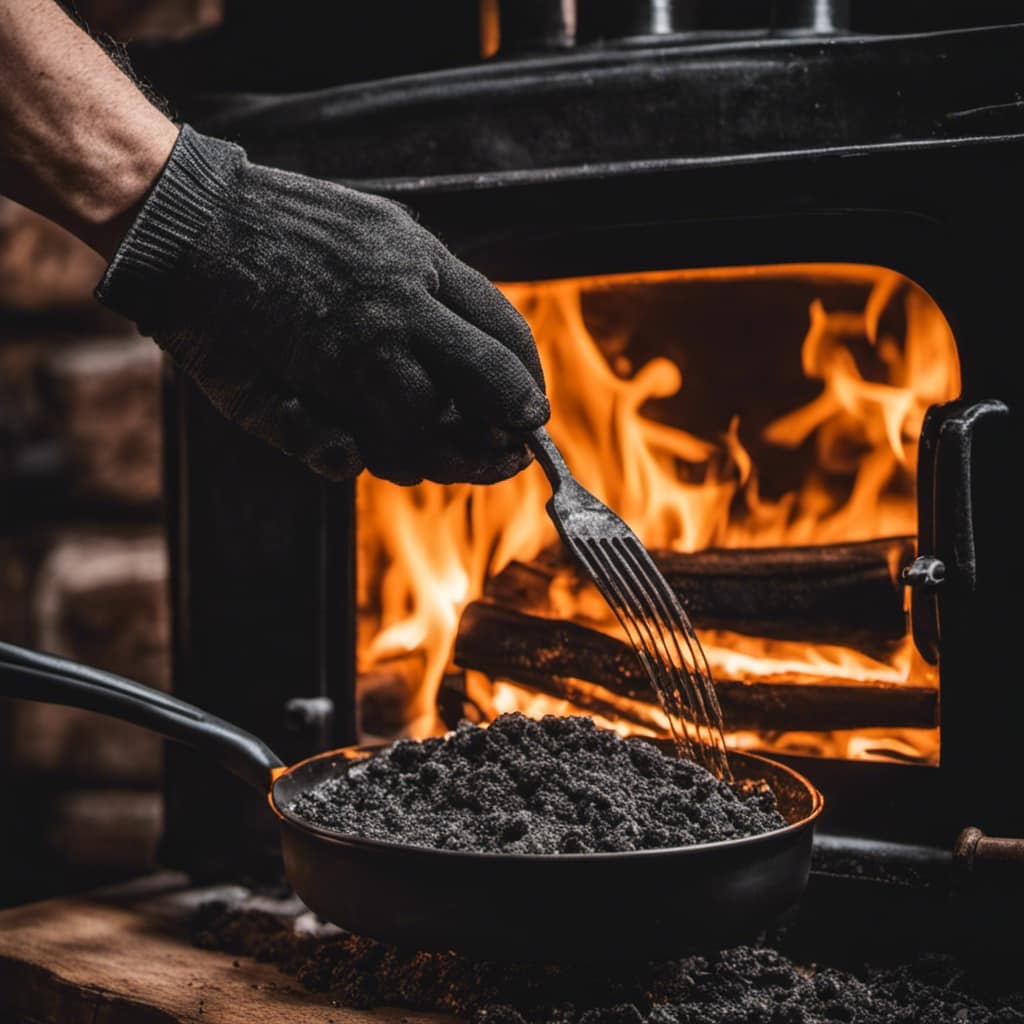
Conclusion
In conclusion, mastering the art of burning wood in your stove requires understanding the function of the damper and controlling the air intake. By adjusting these elements, you can achieve optimal airflow and efficient burning.
Remember to stoke the fire properly and maintain your wood stove regularly for longevity.
With these tips in mind, you’ll be able to enjoy the warmth and comfort of a well-burning wood stove for years to come.
Growing up surrounded by the vast beauty of nature, Sierra was always drawn to the call of the wild. While others sought the comfort of the familiar, she ventured out, embracing the unpredictable and finding stories in the heartbeat of nature.
At the epicenter of every remarkable venture lies a dynamic team—a fusion of diverse talents, visions, and passions. The essence of Best Small Wood Stoves is crafted and refined by such a trio: Sierra, Logan, and Terra. Their collective expertise has transformed the platform into a leading authority on small wood stoves, radiating warmth and knowledge in equal measure.

